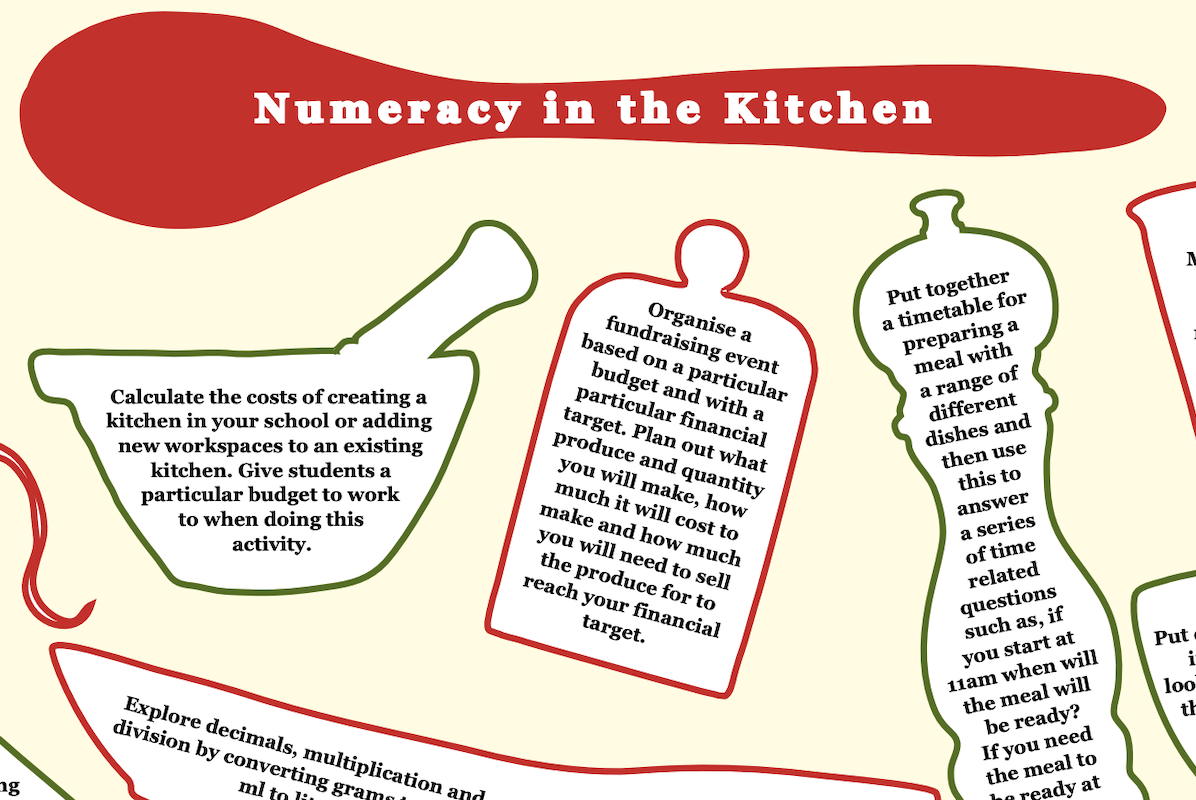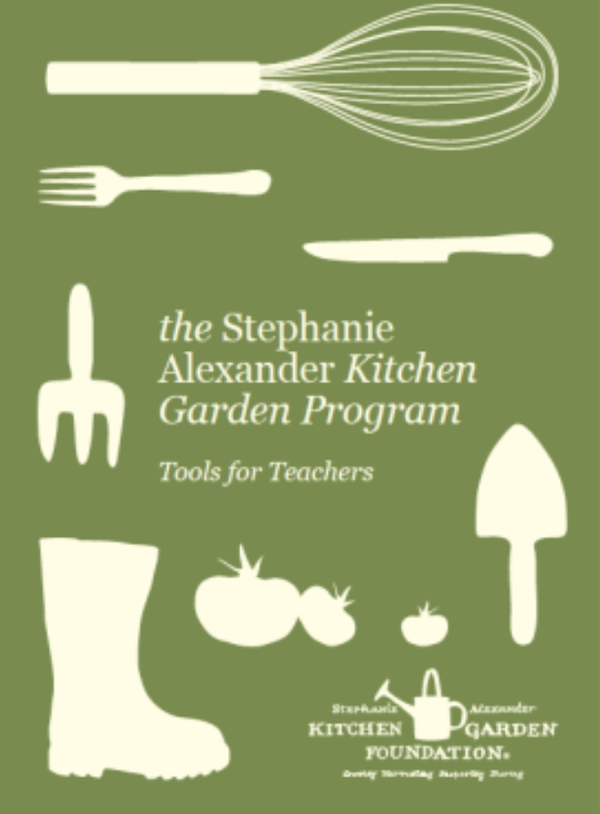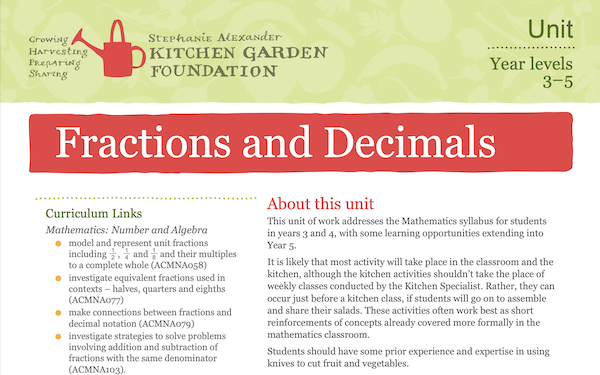Curriculum integration in the Kitchen Garden Program

We know how packed the curriculum is, how busy educators are, and just how much there is to get through in a school day, which is why the Kitchen Garden Program is adaptable and easily integrated into curriculum ‘must-dos’ and ‘must-haves’.
“The Kitchen Garden Program offers ample opportunities for fun, practical, hands-on kitchen and garden activities to be linked to the core curriculum. Through these activities, students can learn about sustainability, mathematics, literacy, geography and much more. This program does not need to be seen as an add-on. It's a way for educators to teach students core curriculum, through growing, harvesting, preparing and sharing fresh, seasonal produce.” – Jessica Brien, Kitchen Garden Foundation Community Engagement Lead
With plenty of resources and guidance, the Kitchen Garden Program can actually relieve pressure from teachers and educators, allowing required subjects to be taught in new, exciting ways. The Program has been formed with the Australian curriculum in mind, so educators can integrate subjects like maths or history into their Kitchen Garden classes by measuring plant growth or learning the cultural origins of a favourite dish.
“We display a range of picture books which are based around a food theme, so children can explore food from other cultures when they are finished with their own tasks… We have many students for whom English is an additional language, and we encourage students to share their knowledge and past experiences of different ingredients, recipes, and occasions when the dishes may be especially important.” – Selena Francis, Southmoor Primary School
Last year, Nashville State School, Qld, introduced a whole school kitchen garden integration with classes from Prep to Year 6 participating one day a week. Nashville’s Kitchen Garden Teacher Simone Keates told us: “We looked at where we could make links and organised the learning around this. Students and class teachers would come to me either in the kitchen or the garden and during their block we would explore and develop concepts covered in their units of work in a different way than they would in class. This worked beautifully. Teachers enjoyed their sessions. The kids LOVED their time in either the kitchen or garden and our parents were super supportive.” Simone also talked about using the garden to link into a Year 5 Design and Technology unit, ‘Design a Dream Garden’, and the kitchen to link into a health unit.
Members have access to a variety of resources via the Shared Table specifically designed to explain how best to incorporate the Australian school curricula into the Kitchen Garden Program, and vice versa.
Some ideas educators have found useful include:
-
Students learning to read and understand recipes and creating menus as part of their program. This can be used as a literacy and comprehension exercise for English.
-
For health, students can look into the Foundation’s philosophy of pleasurable food education and identify how it fits with current nutrition guidelines.
-
For science, establishing a greenhouse or building mini-greenhouses allows the exploration of plant growth and the ideal conditions for cultivating crops.
-
For art subjects, students can take drawing materials and cameras into the garden to document the change in seasons and the visual effect it has on the crops.
-
To learn languages, bilingual signs and posters can be designed for the kitchen and garden spaces.
-
To gain real-life work skills, the class can plan a project around running a café, or a kitchen garden fundraiser, or a market garden.
Natalie Vercoe from Wendouree Primary School, Vic, told us she has found the Literacy, numeracy and science skills in the kitchen and garden – posters and the Recipes and Menus resources really useful in lesson planning for curriculum integration. Simone Keates nominated Kitchen garden learning tasks for primary schools and Curriculum coverage in the Tools for Teachers series as “invaluable” resources. Selena Francis from Southmoor Primary School noted how she keeps activities from the Shared Table to hand, just in case they are unable to cook, and noted the ‘Where Do Our Food Traditions Come From?’ lesson guide in Tools for Teachers is one of the best she has found and goes “a long way to address the Health and Physical Education sections of the curriculum. The students really enjoy sharing their own food experiences as a way to identify and connect factors that contribute to their own wellbeing”.

For students who have trouble learning in a classroom environment, having theoretical subjects like science incorporated into a practical and tangible environment has proven to be effective. Experiential learning gives a reprieve from what might be a difficult environment and an opportunity to develop real-world skills that link back to what is being taught in the classroom.
“It's fantastic to see kids who have difficulty within a traditional classroom setting really come into their own when they are taking part in the program. On the flip side, kids who are active, engaged learners in the classroom tend to naturally take on more of a leadership role when completing tasks in the kitchen and the garden.” – De’arne Houston, Sunbury Primary School
Integrating the Program into the school’s curriculum also eases pressure on an already crowded curriculum. With the right structuring and communication, any teacher can incorporate a learning requirement into kitchen or garden sessions. Cooking and then dividing up a pizza can teach measurement and fractions in a way that’s fun and delicious!

Anne Kelly from Telarah Public School, NSW, said that in the school’s garden shed they store a globe so that they “can do some incidental geography when we are talking about the menu. [Teachers are] often surprised by the number of kids who have not seen a real globe of the world so that talk often includes incidental teaching about the poles, the equator etc.”
“One of our Year 5 teachers always uses the recipes as a text for grammar analysis, with the students identifying parts of speech like nouns and verbs in English time preceding the kitchen session. This really aids the children’s knowledge about the process once they get to the kitchen.” – Anne Kelly, Telarah Public School
So, whether literacy, numeracy, science or environmental sustainability, the Kitchen Garden Program allows numerous opportunities to reinforce core curriculum and is an excellent teaching tool for all learning areas. It can be used to underscore approaches such as STEM, wellbeing programs and project-based learning, and with countless resources, the program can be integrated in formal or incidental ways, across all year levels.
Kitchen Garden members can access curriculum integration resource collections for primary or secondary on the Shared Table. And look out for our monthly one-on-one catch-ups to talk through curriculum integration, resources or anything else Kitchen Garden Program.
Interested in seeing how the Program might work for your school? Talk to our friendly and expert Support Team on 13000 SAKGF (13000 72543) or membership@kitchengardenfoundation.org.au.
< Back to Latest News
